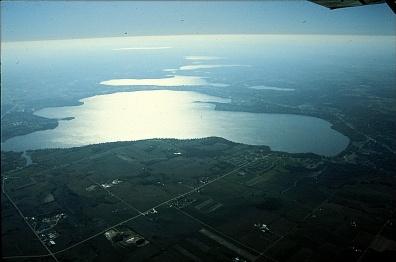Introduction
Increased
human development within
the Yahara lakes region has resulted in increased levels of phosphorus
within
the lakes and in turn has caused the once olgotrophic lakes to
transition to eutrophic lakes. This transition has resulted in
increased algae
levels
and a reduction in clarity of the lake water. New research has
begun to
find that algae is able to be used to make bio diesel which in turn can
be used
to power much of our existing machinery.
Using this new relationship we are exploring the possibility of
creating a
large scale algae farm in Lake Mendota that would strive to capture
phosphorus
entering the Yahara lakes and in turn be used to produce algae that
could be
harvested to make biodiesel. The creation of this algae farm
would not
only produce biodiesel but would work to decrease to overall levels of
phosphorus and other nutrients in the lake. This decrease would
then
reduce algae levels in the area outside of the algae farm and assist in
returning the lake to its original olgotrphic status.

Aeriel view of the Yahara
River chain of lakes
in southern Wisconsin. The first and largest
lake is Lake Mendota. The
northeast
corner of the lake, where the algae farm would be
located, is in the bottom left hand
corner of
the image.
To
accomplish this we propose the
construction of an algae retaining barrier that will enclose the
northern edge
of Lake Mendota. This algae retaining barrier will prevent the
passage of
phosphorus and algae into the rest of Lake Mendota. Once this
barrier is
constructed, the northern part of the lake will be turned into an algae
farm. The algae that is produced will then be transported to a
biodiesel
production plant.
The
scale of this project is quite
large and as a result we explored in depth one aspect of this
design that
could go a long way in proving if such a system would be effective or
viable in
Lake Mendota. Through our research we investigated how the
implementation
of a large algae retaining wall in the lake will affect the current
flows and
how it will work to retain algae and phosphorus within the Algae
farm. By creating a scale model of the algae farm system
and analyzing
flow rates during normal flow and flooding, we sought to gain a better
understanding of the interaction of the system and the algae retaining
wall. While
our focus for this research is directed towards the creation of a
scale
model and examining the interaction of the lake with the retaining
structure,
we have also provided analysis of the future
research that is necessary to make this venture a reality.
|

